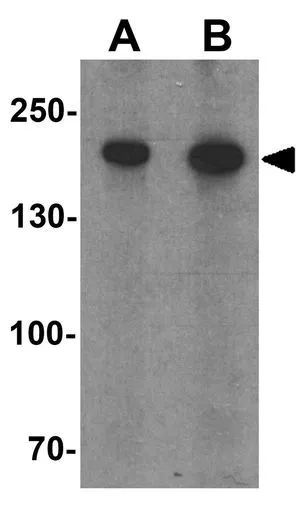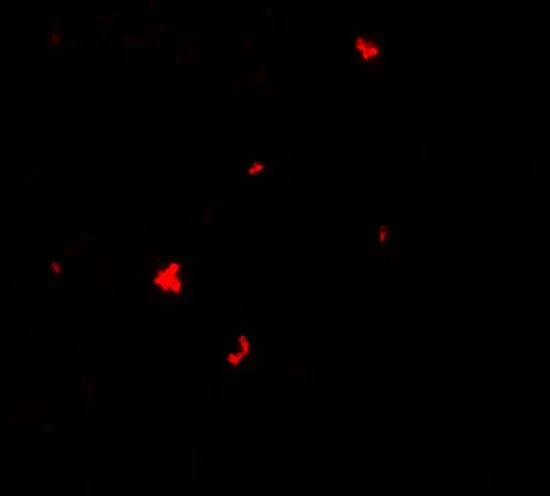
WB analysis of SW480 cell lysate using GTX31861 PHLPP1 antibody. Working concentration : (A) 1 and (B) 2 microg/ml
PHLPP1 antibody
GTX31861
ApplicationsImmunoFluorescence, Western Blot, ELISA, ImmunoCytoChemistry
Product group Antibodies
ReactivityHuman
TargetPHLPP1
Overview
- SupplierGeneTex
- Product NamePHLPP1 antibody
- Delivery Days Customer9
- Antibody SpecificityAt least four isoforms are known to exist; this antibody will only detect the largest isoform. PHLPP1 antibody is predicted to not cross react with PHLPP2.
- Application Supplier NoteWB: 1 - 2 microg/mL. *Optimal dilutions/concentrations should be determined by the researcher.Not tested in other applications.
- ApplicationsImmunoFluorescence, Western Blot, ELISA, ImmunoCytoChemistry
- CertificationResearch Use Only
- ClonalityPolyclonal
- Concentration1 mg/ml
- ConjugateUnconjugated
- Gene ID23239
- Target namePHLPP1
- Target descriptionPH domain and leucine rich repeat protein phosphatase 1
- Target synonymsPH domain leucine-rich repeat-containing protein phosphatase 1; PH domain-containing family E member 1; PHLPP; pleckstrin homology domain containing, family E (with leucine rich repeats) member 1; PLEKHE1; PPM3A; protein phosphatase, Mg2+/Mn2+ dependent 3A; SCN circadian oscillatory protein; SCOP; suprachiasmatic nucleus circadian oscillatory protein
- HostRabbit
- IsotypeIgG
- Protein IDO60346
- Protein NamePH domain leucine-rich repeat-containing protein phosphatase 1
- Scientific DescriptionThis gene encodes a member of the serine/threonine phosphatase family. The encoded protein promotes apoptosis by dephosphorylating and inactivating the serine/threonine kinase Akt, and functions as a tumor suppressor in multiple types of cancer. Increased expression of this gene may also play a role in obesity and type 2 diabetes by interfering with Akt-mediated insulin signaling. [provided by RefSeq, Dec 2011]
- ReactivityHuman
- Storage Instruction-20°C or -80°C,2°C to 8°C
- UNSPSC12352203


